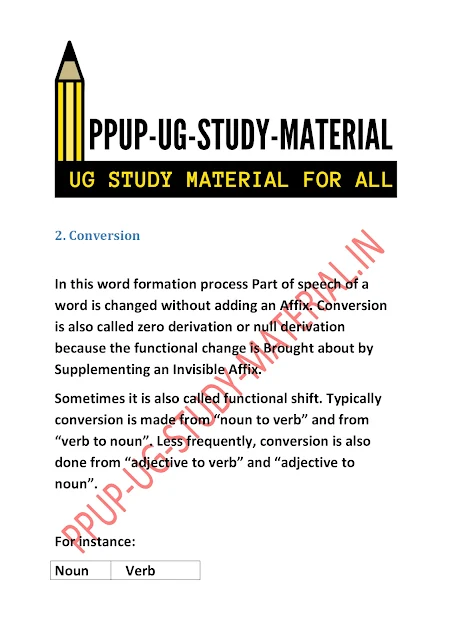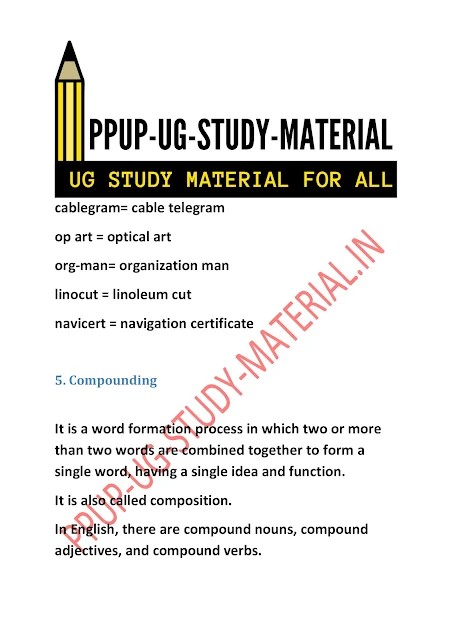A note on the Word formation processes pdf download - ppup part 1 english honours notes and study material pdf
[ A note on the Word formation processes pdf download | ppup part 1 english honours notes and study material pdf ]
In this BlogPost we'll cover These Topics - ppup part 1 english honours notes and study material pdf, PPUP part 1 english honours ug study material download, PPUP part 1 english honours ug study material free, PPUP part 1 english honours ug study material online, PPUP part 1 english honours ug study material pdf, PPUP part 1 english honours ug study material quora, patliputra university guess paper 2024 pdf, Word formation processes pdf, Word formation processes with examples, Word formation processes in morphology, Types of word formation processes, 10 word formation processes, Word formation processes ppt, Word formation processes in linguistics, Word formation processes pdf notes, Word formation processes pdf ppt, Word formation processes pdf slideshare, Word formation processes pdf download, Types of word formation processes pdf, Introduction to word formation processes pdf, Word formation processes in English












































No comments